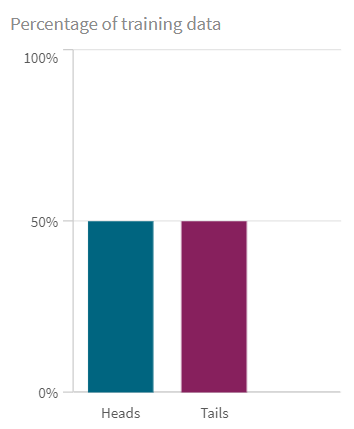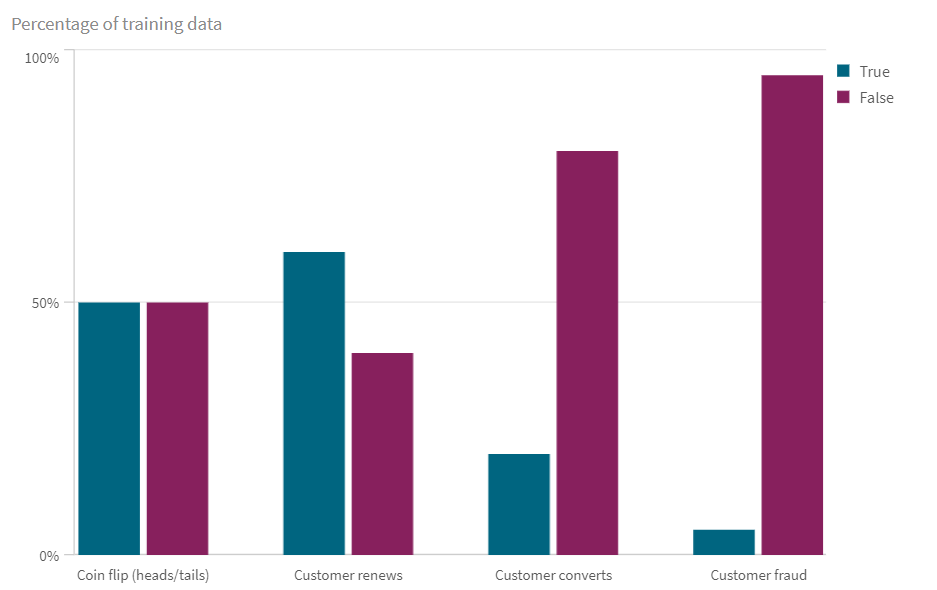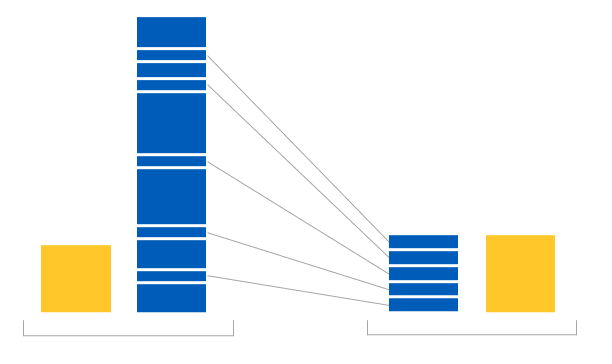Class balancing
In a binary classification problem, there might be more data collected for one of the two classes. This uneven balance between the classes leads to the model learning more about the majority class than the minority class. You can use class balancing to improve the model.
What is class balance
In a dataset for binary classification there are two classes. Class balance is the relative frequency of those classes.
If you flipped a perfectly random coin enough times, you would get a perfectly balanced set of two classes (heads and tails). The average class value is 0.5 in a perfectly balanced case (where one class is 1 and the other class is 0).
Two perfectly balanced classes

In many cases the class balance will not be equal. This could lead to the model learning more about the majority class than the minority class.
Examples of classes with unequal balance

Proportional bias
A model can be very accurate by guessing the majority class in unbalanced data. For example, if 95 percent of website visitors don’t make a purchase, a model can be 95 percent accurate by saying that no one will purchase. The model learns about the majority class, but it's often more important to learn about the minority class. For example, why do the other 5 percent of the visitors to the website make purchases?
Effects from class balancing
By performing class balancing on your data, you might get a model that is more feature-focused and that has learned more about the minority class. Potential effects on the model include:
-
Higher F1 score because the weight of the minority class has increased.
-
Marginally lower overall accuracy score because it is not relying on proportional bias as much.
-
A more informative model because it is relying more on the features and how to distinguish the classes as being separate. The SHAP values might be more informative in a class-balanced model.
Note that in small datasets, class balancing could cause a loss of feature data. Also, by changing the proportions in the dataset, some information might be lost, which could bias model predictions.
How to class balance
To class balance the data, you first need to find out what the ideal balance is for your specific business case. Anywhere from 80/20 to 50/50 could be needed. Balance just enough to get what you need because over-tuning of class balancing could lead to an overfit model. Then test the model with manual holdouts.
The most common method for class balancing is undersampling. This is done by randomly sampling the majority class so that it comes into better balance with the minority class. The figure illustrates how samples are taken from the majority class in the original dataset to get a dataset with balanced classes.
Undersampling of the majority class (blue) to get an equal balance with the minority class (yellow)

